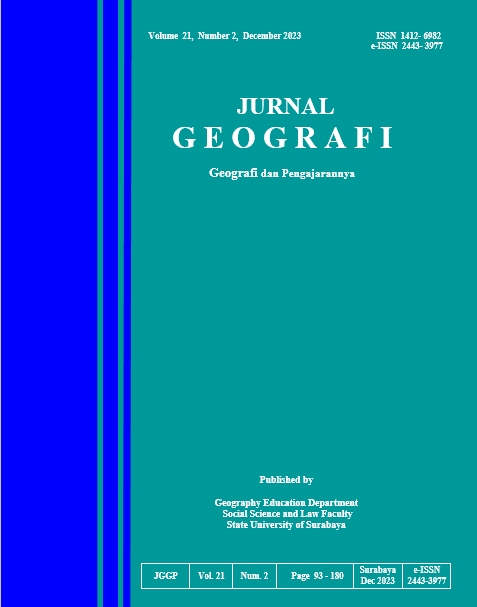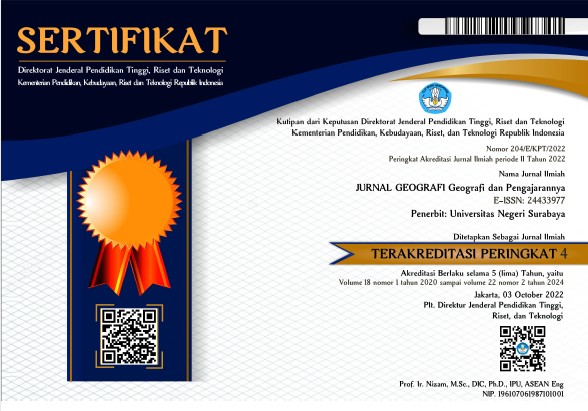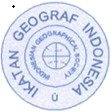SPATIAL ANALYSIS OF COVID-19 SPREAD PATTERN USING KERNEL DENSITY METHOD IN SURAKARTA
DOI:
https://doi.org/10.26740/jggp.v21n2.p93-106Abstract
The COVID-19 pandemic caused by the SARS-CoV-2 virus, which spreads through the respiratory system and can cause respiratory problems, began in Wuhan, China, in December 2019 and quickly spread worldwide, including Indonesia. Surakarta experienced a significant increase in cases from April to June due to factors such as the celebration of Eid al-Fitr. The author used the Kernel Density method to map the spatial distribution of COVID-19 cases in Surakarta and to investigate the relationship between vaccination rates and positive patients. The methodology involved a quantitative descriptive study using secondary data from the Surakarta Health Agency in May 2021. Based on the research, it was found that there was no relationship between the achievement of the first dose of vaccination and the number of confirmed COVID-19 cases in the city of Surakarta. The spread of COVID-19 was more influenced by activities carried out by the community in public facilities or outdoor spaces, as well as compliance with the health protocols provided by the government.
Downloads
Downloads
Published
How to Cite
Issue
Section
License
Copyright (c) 2023 Dwi Agung Wicaksono Dwi Agung Wicaksono, Frederik Samuel Papilaya

This work is licensed under a Creative Commons Attribution-NonCommercial-ShareAlike 4.0 International License.
 Abstract views: 323
,
Abstract views: 323
, PDF Downloads: 435
PDF Downloads: 435
















